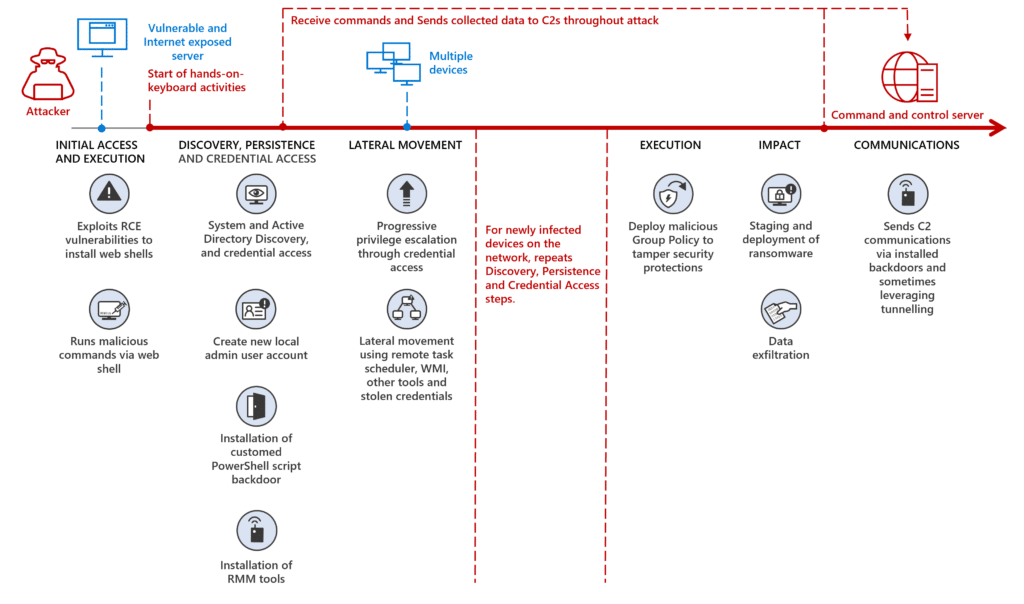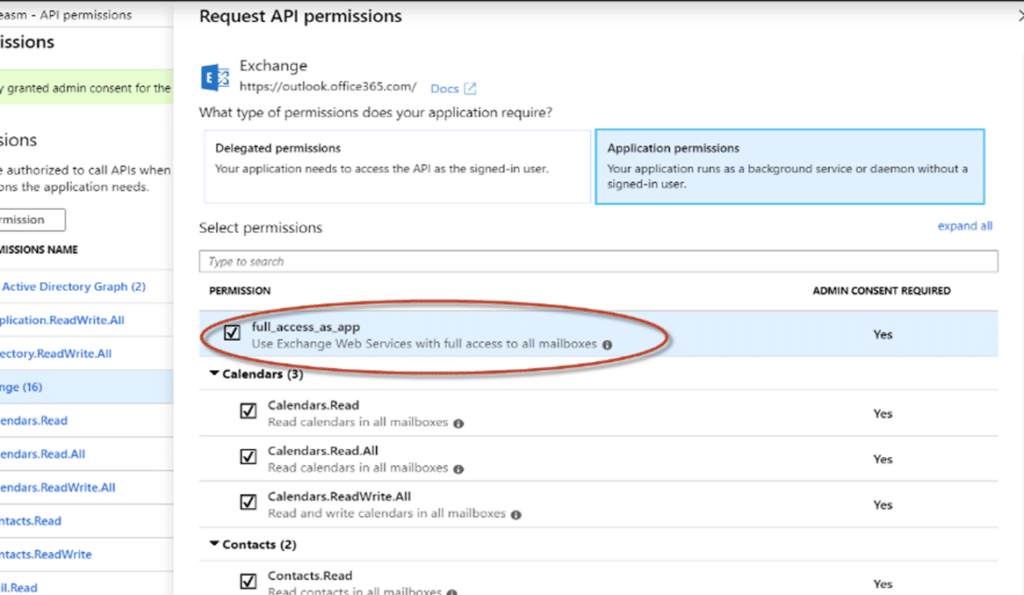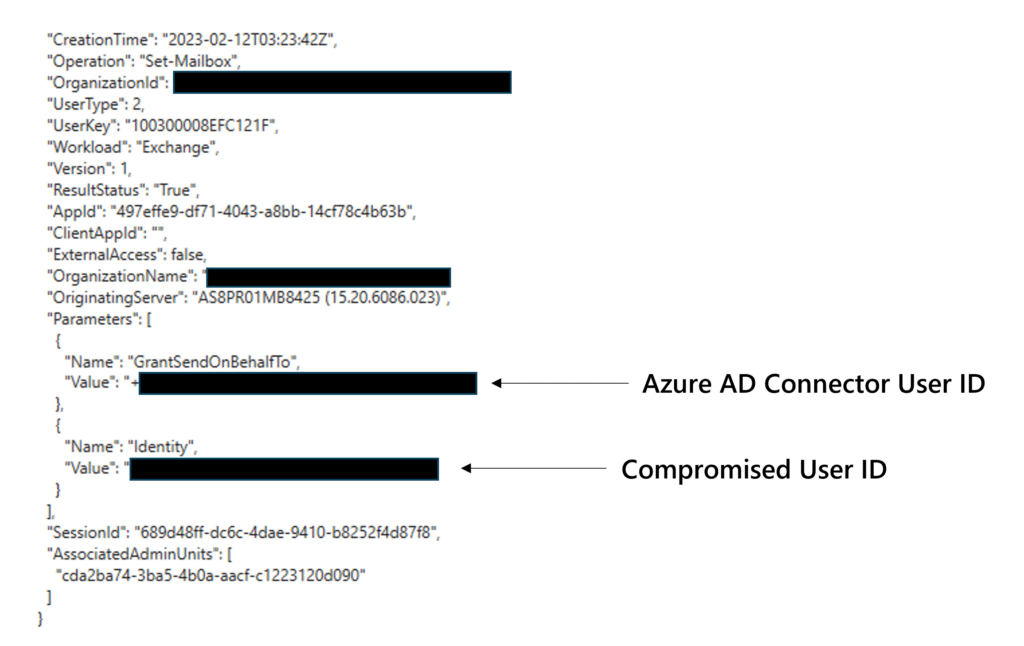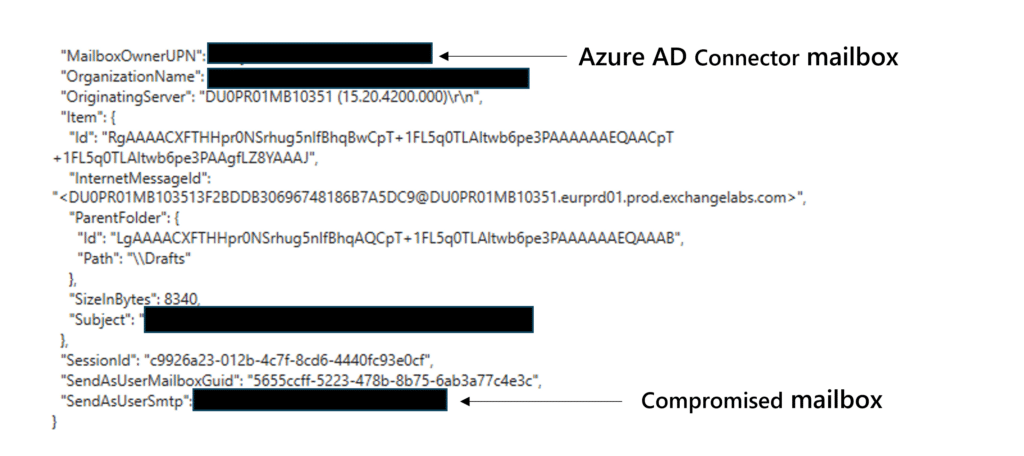Notizie per Categorie
Articoli Recenti
- New whitepaper outlines the taxonomy of failure modes in AI agents 24 Aprile 2025
- Understanding the threat landscape for Kubernetes and containerized assets 23 Aprile 2025
- [Launched] Generally Available: Instance Mix for Virtual Machine Scale Sets 22 Aprile 2025
- Microsoft’s AI vision shines at MWC 2025 in Barcelona 22 Aprile 2025
- [Launched] Generally Available: Announcing the Next generation Azure Data Box Devices 22 Aprile 2025
- [Launched] Generally Available: Cross-Region Data Transfer Capability in Azure Data Box Devices 21 Aprile 2025
- [Launched] Generally Available: Azure Ultra Disk Storage is now available in Spain Central 21 Aprile 2025
- [Launched] Generally Available: Azure Firewall resource specific log tables get Azure Monitor Basic plan support 21 Aprile 2025
- Hannover Messe 2025: Microsoft puts industrial AI to work 21 Aprile 2025
- Securing our future: April 2025 progress report on Microsoft’s Secure Future Initiative 21 Aprile 2025
MERCURY and DEV-1084: Destructive attack on hybrid environment
Microsoft Threat Intelligence has detected destructive operations enabled by MERCURY, a nation-state actor linked to the Iranian government, that attacked both on-premises and cloud environments. While the threat actors attempted to masquerade the activity as a standard ransomware campaign, the unrecoverable actions show destruction and disruption were the ultimate goals of the operation.
Previous MERCURY attacks have been observed targeting on-premises environments, however, the impact in this case notably also included destruction of cloud resources. Microsoft assesses that MERCURY likely worked in partnership with another actor that Microsoft tracks as DEV-1084, who carried out the destructive actions after MERCURY’s successful operations had gained access to the target environment.
MERCURY likely exploited known vulnerabilities in unpatched applications for initial access before handing off access to DEV-1084 to perform extensive reconnaissance and discovery, establish persistence, and move laterally throughout the network, oftentimes waiting weeks and sometimes months before progressing to the next stage. DEV-1084 was then later observed leveraging highly privileged compromised credentials to perform en masse destruction of resources, including server farms, virtual machines, storage accounts, and virtual networks, and send emails to internal and external recipients.
In this blog post, we detail our analysis of the observed actor activity and related tools. We also share information to the community and industry partners on ways to detect these attacks, including detection details of MERCURY and DEV-1084’s tools in Microsoft 365 Defender, Microsoft Defender for Identity, Microsoft Defender for Cloud Applications, Microsoft Defender Antivirus, and Microsoft Defender for Endpoint. As with any observed nation-state actor activity, Microsoft has directly notified targeted or compromised customers, providing them with important information needed to secure their environments.
Microsoft uses DEV-#### designations as a temporary name given to an unknown, emerging, or a developing cluster of threat activity, allowing Microsoft to track it as a unique set of information until we reach high confidence about the origin or identity of the actor behind the activity.
Who is DEV-1084?
Microsoft tracks the destructive actions documented in this blog post as DEV-1084. DEV-1084 likely worked in partnership with MERCURY—an Iran-based actor that the US Cyber Command has publicly linked to Iran’s Ministry of Intelligence and Security (MOIS). DEV-1084 publicly adopted the DarkBit persona and presented itself as a criminal actor interested in extortion, likely as an attempt to obfuscate Iran’s link to and strategic motivation for the attack.
The link between the DEV-1084 cluster and MERCURY was established based on the following evidence:
- DEV-1084 operators were observed sending threatening emails from 146.70.106[.]89, an IP address previously linked to MERCURY.
- DEV-1084 used MULLVAD VPN, the same VPN provider historically used by MERCURY.
- DEV-1084 used Rport and a customized version of Ligolo. MERCURY has also been observed using Rport and a similar version of Ligolo in previous attacks.
- DEV-1084 used the vatacloud[.]com domain for command and control (C2) during this incident. Microsoft assesses with high-confidence that the vatacloud[.]com domain is controlled by MERCURY operators.
Microsoft assesses that MERCURY gains access to the targets through remote exploitation of an unpatched internet-facing device. MERCURY then handed off access to DEV-1084. It is not currently clear if DEV-1084 operates independently of MERCURY and works with other Iranian actors or if DEV-1084 is an ‘effects based’ sub-team of MERCURY that only surfaces when MERCURY operators are instructed to carry out a destructive attack.
Early activities, related attacker tools and techniques
Microsoft assesses with moderate confidence that the threat actors attempted several times and succeeded to perform initial intrusion leveraging exposed vulnerable applications, for example, continuing to exploit Log4j 2 vulnerabilities in unpatched systems in July 2022.
After gaining access, the threat actors deploy several tools and leverage techniques to maintain persistence, which provide effective and continued access to compromised devices, such as the following:
- Installing web shells
- Adding a local user account and elevating privileges to local administrator
- Installing legitimate remote access tools, such as RPort, Ligolo and eHorus
- Installing a customized PowerShell script backdoor
- Stealing credentials
Once the persistence is established, the threat actors perform extensive discovery leveraging common native Windows tools and commands such as netstat and nltest. Such reconnaissance activities were seen leveraged throughout the attack chain.
The threat actors consistently perform extensive lateral movement actions using the acquired credentials within a targeted environment. These actions mainly involved:
- Remote scheduled tasks to launch their customized PowerShell backdoor
- Windows Management Instrumentation (WMI) to launch commands on devices
- Remote services to run encoded PowerShell commands
After infecting the new devices, the threat actors often installed the same persistence mechanisms as described above. Interestingly, after each main attack step, the actors did not always immediately continue their operations but would wait weeks and sometimes months before moving to the next step.
For execution and communication, the threat actors leverage several C2 servers and sometimes deploy tunnelling tools, such as Ligolo and OpenSSH, commonly leveraged to stay under the radar of security teams and solutions.
On-premises destructive impact
In observed activity, the threat actors leveraged highly privileged credentials and access to domain controllers on on-premises destructive operations to prepare for large-scale encryption of targeted devices.
To do so, they first interfered with security tools using Group Policy Objects (GPO). With defenses impaired, the threat actors proceeded to stage the ransomware payload in the NETLOGON shares on several domain controllers.
GPO was leveraged again to register a scheduled task used to launch the ransomware payload. Finally, the ransomware payload encrypted files found on the file system of the targeted devices by changing the file name extension to DARKBIT and dropped ransom notes.

Moving from on-premises to cloud
To move from on-premises to the cloud, the threat actors had to first compromise two privileged accounts and leverage them to manipulate the Azure Active Directory (Azure AD) Connect agent. Two weeks before the ransomware deployment, the threat actors first used a compromised, highly privileged account to access the device where the Azure Active Directory (Azure AD) Connect agent is installed. We assess with high confidence that the threat actors then used the AADInternals tool to extract the plaintext credentials of a privileged Azure AD account. The threat actors then used these credentials to pivot from the on-premises environment to the Azure AD environment.
Azure AD Connect is an on-premises application for managing hybrid identities through features like password hash synchronization, pass-through authentication, objects synchronization, and others. As part of the express settings installation process, multiple accounts are created both in the on-premises (Windows Server Active Directory) and cloud (Azure AD) environments. The first account is the AD DS Connector Account. The account name is prefixed with MSOL_ and it is created with a long complex password.

This account’s permissions are set based on features enabled during the service’s installation, but in most common scenarios, the account has permissions to replicate directory changes, modify passwords, modify users, modify groups, and so on (see all the permissions here). In addition, during installation, an Azure AD account called the Azure AD Connector Account is also created. This account is used by the synchronization service to manage Azure AD objects. The account is created with a long complex password as well, and by default (if using the express settings) prefixed with Sync_[ServerName]. This user is assigned with the Directory Synchronization Accounts role (see detailed permissions of this role here). In older versions, this account might be assigned with the Global Administrator role.

There are other entities detailed here that are created but are less relevant to this topic.
Extracting credentials
Two weeks before the ransomware deployment, the threat actors were observed using compromised credentials to access the Azure AD Connect device. Next, they set up an SSH tunnel to an attacker-controlled device. On a separate attacker-controlled compromised device, evidence indicates cloning of the AADInternals tool. One of the functions available in this tool’s library is Get-AADIntSyncCredentials, which allows any local administrator on a device where Azure AD Connect is installed to extract the plaintext credentials of both the Azure AD Connector account and the AD DS Connector account.
Shortly before the ransomware deployment, we observed authentication from a known attacker IP address into the Azure AD Connector cloud account. Investigating this sign-in showed that the threat actors were able to access the account on the first attempt without any guessing or modification of the password, indicating that the actors possessed the password for this account. The Azure AD Connector account is configured with single-factor authentication, making it easier for the attacker to gain entry and elevate privileges.
Cloud destructive impact
On the day of the ransomware attack, the threat actors executed multiple actions in the cloud using two privileged accounts. The first account was the compromised Azure AD Connector account, which had Global Administrator permissions as it was set up for an old solution (DirSync). For the second account, which also had Global Administrator permissions, the threat actors leveraged RDP for access into the account. Even though this account had MFA in place, the threat actors accessed it through RDP, which is an open session that evades MFA blocking their activities.

Mass Azure resource deletion
On the same day, a successful sign-in to the Microsoft Azure environment was observed. The threat actors claimed the Global Administrator permission through Azure Privileged Identity Management (PIM) and elevated access to get permissions to the target’s management groups and Azure subscriptions. The Azure AD Connector account and the compromised administrator account were then used to perform significant destruction of the Azure environment—deleting within a few hours server farms, virtual machines, storage accounts, and virtual networks. We assess that the attacker’s goal was to cause data loss and a denial of service (DoS) of the target’s services.
Exchange Web Server API abuse
The actors went on to provide an existing legitimate OAuth application with both the full_access_as_app permission and administrator consent, which granted the threat actors full access to mailboxes through Exchange Web Services.

With the obtained cloud administrator privileges, the threat actors updated the OAuth application with certificates to conduct malicious activities. These newly added credentials could then be used to issue access tokens and authenticate on behalf of the application to access cloud resources.
We then observed the threat actors using this application’s permissions to perform GetItem operations over many mailboxes in the target environment. They also performed thousands of search activities, which we suspect were attempts to dump mailboxes and/or search for sensitive data in them.
Email impersonation
The threat actors used the compromised administrator account to grant SMTP Send on behalf permissions to the Azure AD Connector account over a high-ranking employee’s mailbox, using the Set-Mailbox PowerShell cmdlet.

Emails were then created and sent both internally and externally.

The timeline below summarizes the sequence of events:

Mitigations for destructive attacks
The techniques used by the actors and described in this blog can be mitigated by adopting the following security measures:
Recommendations to secure your on-prem environment
- Refer to Microsoft’s blog Ransomware as a service: Understanding the cybercrime gig economy and how to protect yourself for recommendations on building strong credential hygiene and other robust measures to defend against ransomware and human operated attacks.
- Enable tamper protection – Tamper protection is a feature in Microsoft Defender for Endpoint that prevents antivirus tampering and misconfiguration by malicious apps and actors. Customers running Intune can enable DisableLocalAdminMerge to prevent modification of antivirus exclusions via GPO.
Recommendations to secure your Azure AD environment
- Enable Conditional Access policies – Conditional Access policies are evaluated and enforced every time the user attempts to sign in. Organizations can protect themselves from attacks that leverage stolen credentials by enabling policies such as device compliance or trusted IP address requirements.
- Enable continuous access evaluation – Continuous access evaluation (CAE) revokes access in real time when changes in user conditions trigger risks, such as when a user is terminated or moves to an untrusted location.
- Search unified audit logs for the SendAs operation to identify and track emails sent on behalf of a user mailbox.
- Further steps and recommendation to manage, design, and secure your Azure AD environment can be found by referring to Azure Identity Management and access control security best practices.
Detections
Microsoft 365 Defender
The following alerts in Microsoft 365 Defender can be used to detect suspicious operations in Azure related to the attacker activities described in this blog, including destructive activity:
- Access elevation by risky user
- Suspicious Azure resource deletions
- Suspicious Addition of an Exchange related App Role
In addition, the following alert can help detect compromised Azure AD Connect accounts:
- Unusual activities by Azure AD Connect sync account
Microsoft Defender for Cloud Apps
For Microsoft Defender for Cloud Apps with Azure Connector enabled, the following alerts can be used to detect destructive operations in Azure:
- Multiple storage deletion activities
- Multiple delete VM activities
Azure AD Identity Protection
Monitor medium and high severity alerts for highly privileged accounts as they can indicate malicious activity. For example:
- Unfamiliar sign-in properties
Find details of Azure AD Identity Protection alerts here.
Microsoft Defender for Identity
The following Microsoft Defender for Identity alerts can indicate associated threat activity:
- Suspicious additions to sensitive groups
For relevant accounts with Honeytoken configured, the following alert can indicate malicious activity:
- Honeytoken activity
Microsoft Defender Antivirus
Microsoft Defender Antivirus detects attempted exploitation and post-exploitation activity and payloads. Turn on cloud-delivered protection to cover rapidly evolving attacker tools and techniques. Cloud-based machine learning protections block most new and unknown threats. Refer to the list of detection names related to exploitation of Log4j 2 vulnerabilities. Detections for the IOCs listed above are listed below:
- Backdoor:PHP/Remoteshell.V
- HackTool:Win32/LSADump
- VirTool:Win32/RemoteExec
- Trojan:PowerShell/Downloader.SB
- Trojan:Win32/Nibtse.G!tsk
- Backdoor:ASP/Shellman.SA
- Ransom:Win64/DarkBit
- VirTool:Win32/AtExecCommand
Microsoft Defender for Endpoint
Microsoft Defender for Endpoint alerts with the following titles can indicate possible presence of the indicators of compromise listed below.
- Mercury actor activity detected
- Ransomware-linked emerging threat actor DEV-1084 detected
Reducing the attack surface
Microsoft Defender for Endpoint customers can turn on the following attack surface reduction rule to block or audit some observed activity associated with this threat:
- Block executable files from running unless they meet a prevalence, age, or trusted list criterion.
- Implement controlled folder access and add folders to the protected folders list to help prevent files from being altered or encrypted by ransomware. Set controlled folder access to Enabled.
Detecting Log4j 2 exploitation
Alerts that indicate threat activity related to the exploitation of the Log4j 2 exploitation should be immediately investigated and remediated. Refer to our Log4j related blogs to learn about this vulnerability and for a list of Microsoft Defender for Endpoint alerts that can indicate exploitation and exploitation attempts.
Detecting post-exploitation activity
Alerts with the following titles may indicate post-exploitation threat activity related to MERCURY activity described in this blog and should be immediately investigated and remediated. These alerts are supported on both Windows and Linux platforms:
Any alert title related to web shell threats, for example:
- ‘WebShell’ backdoor was prevented on an IIS Web server
Any alert title that mentions the DarkBit ransomware threat or DEV-1084, for example:
- ‘DarkBit’ ransomware was blocked
- ‘DarkBit’ ransomware was detected
- ‘DarkBit’ ransomware was prevented
- Ransomware-linked emerging threat actor DEV-1084 detected
Any alert title that mentions suspicious scheduled task creation or execution, for example:
- Suspicious scheduled task
Any alert title that mentions suspected tunneling activity, for example:
- Suspicious SSH tunneling activity
Any alert title that mentions suspected tampering activity, for example:
- Suspicious Microsoft Defender Antivirus exclusion
- Microsoft Defender Antivirus tampering
Any alert title that mentions PowerShell, for example:
- Suspicious process executed PowerShell command
- A malicious PowerShell Cmdlet was invoked on the machine
- Suspicious PowerShell command line
- Suspicious PowerShell download or encoded command execution
- Suspicious remote PowerShell execution
Any alert title related to suspicious remote activity, for example:
- Suspicious RDP session
- An active ‘RemoteExec’ malware was blocked
- Suspicious service registration
Any alert related to persistence:
- Anomaly detected in ASEP registry
- User account created under suspicious circumstances
Any alert title that mentions credential dumping activity or tools, for example:
- Malicious credential theft tool execution detected
- Credential dumping activity observed
- Mimikatz credential theft tool
- ‘DumpLsass’ malware was blocked on a Microsoft SQL server
Microsoft Defender Vulnerability Management
In addition to the mitigations above being presented and managed through Microsoft Defender Vulnerability Management, Microsoft 365 Defender customers can use threat and vulnerability management to identify and remediate devices that are vulnerable to Log4j 2 exploitation. More comprehensive guidance on this capability can be found on this blog: Guidance for preventing, detecting, and hunting for exploitation of the Log4j 2 vulnerability.
Advanced hunting queries
Microsoft 365 Defender
To locate related activity, Microsoft 365 Defender customers can run the following advanced hunting queries:
// Advanced Hunting Query to surface potential Mercury PowerShell script backdoor installation
DeviceFileEvents | where InitiatingProcessFileName =~ "powershell.exe" | where FolderPath in~ (@"c:programdatadb.ps1", @"c:programdatadb.sqlite") | summarize min(Timestamp), max(Timestamp) by DeviceId, SHA256, InitiatingProcessParentFileName DeviceProcessEvents | where InitiatingProcessFileName =~ "powershell.exe" | where InitiatingProcessCommandLine has_cs "-EP BYPASS -NoP -W h" | summarize makeset(ProcessCommandLine), min(Timestamp), max(Timestamp) by DeviceId
// Advanced Hunting Query to surface potential Mercury PowerShell script backdoor initiating commands
DeviceProcessEvents | where InitiatingProcessFileName =~ "powershell.exe" | where InitiatingProcessCommandLine contains_cs @"c:programdatadb.ps1" | summarize makeset(ProcessCommandLine), min(Timestamp), max(Timestamp) by DeviceId
//Advanced Hunting Query for Azure resource deletion activity
let PrivEscalation = CloudAppEvents | where Application == "Microsoft Azure" | where ActionType == "ElevateAccess Microsoft.Authorization" | where ActivityObjects has "Azure Subscription" and ActivityObjects has "Azure Resource Group" | extend PrivEscalationTime = Timestamp | project AccountObjectId, PrivEscalationTime ,ActionType; CloudAppEvents | join kind = inner PrivEscalation on AccountObjectId | extend DeletionTime = Timestamp | where (DeletionTime - PrivEscalationTime) <= 1h | where Application == "Microsoft Azure" | where ActionType has "Delete" |summarize min(DeletionTime), TotalResourcersDeleted =count(), CountOfDistinctResources= dcount(ActionType), DistinctResources=make_set(ActionType) by AccountObjectId
//AHQ used to detect attacker abusing OAuth application during the attack
CloudAppEvents
| where Application == "Office 365"
| where ActionType == "Consent to application."
| where RawEventData.ResultStatus =~ "success"
| extend UserId = tostring(RawEventData.UserId)
| mv-expand AdminConsent = RawEventData.ModifiedProperties
| where AdminConsent.Name == "ConsentContext.IsAdminConsent" and AdminConsent.NewValue == "True"
| project ConsentTimestamp =Timestamp, UserId, AccountObjectId, ReportId, ActionType
| join kind = leftouter (CloudAppEvents
| where Application == "Office 365"
| where ActionType == "Add app role assignment to service principal."
| extend PermissionAddedTo = tostring(RawEventData.Target[3].ID)
| extend FullAccessPermission = RawEventData.ModifiedProperties
| extend OuthAppName = tostring(FullAccessPermission[6].NewValue) // Find app name
| extend OAuthApplicationId = tostring(FullAccessPermission[7].NewValue) // Find appId
| extend AppRoleValue = tostring(FullAccessPermission[1].NewValue) // Permission Level
| where AppRoleValue == "full_access_as_app"
| project PermissionTime=Timestamp, InitiatingUser=AccountDisplayName, OuthAppName, OAuthApplicationId, AppRoleValue, AccountObjectId, FullAccessPermission
) on AccountObjectId
Microsoft Sentinel
Microsoft Sentinel has a range of detection and threat hunting content that customers can use to detect the post exploitation activity detailed in this blog in addition to Microsoft Defender detections list above.
- full_access_as_app Granted To Application
- Potential SSH Tunnel to AAD Connect Host
- Suspicious Sign In by AAD Connect Sync Account
- Malicious web application requests linked with Microsoft Defender for Endpoint
- Web Shell Activity
- Tracking Privileged Account Rare Activity
- Mass Cloud resource deletions Time Series Anomaly
- Consent to Application discovery
- OAuth Application Required Resource Access Update
- Rare application consent
- Credential added after admin consented to ApplicationNew access credential added to Application or Service Principal
Microsoft Sentinel customers can use the TI Mapping analytic (a series of analytics all prefixed with “TI map”) to automatically match the indicators mentioned in this blog post with data in their workspace. If the TI Map analytics are not currently deployed, customers can install the Threat Intelligence solution from the Microsoft Sentinel Content Hub to have the analytics rule deployed in their Sentinel workspace. More details on the Content Hub can be found here: https://learn.microsoft.com/azure/sentinel/sentinel-solutions-deploy
Indicators of compromise (IOCs)
The below list provides IOCs observed during our investigation. We encourage our customers to investigate these indicators in their environments and implement detections and protections to identify past related activity and prevent future attacks against their systems.
| Indicator | Type | Description |
| 9107be160f7b639d68fe3670de58ed254d81de6aec9a41ad58d91aa814a247ff | DEV-1084 ransom payload | 8thCurse.exe |
| 80bd00c0f6d5e39b542ee6e9b67b1eef97b2dbc6ec6cae87bf5148f1cf18c260 | DEV-1084 batch script | |
| 8dd9773c24703e803903e7a5faa088c2df9a4b509549e768f29276ef86ef96ae | DEV-1084 batch script | |
| 486eb80171c086f4d184423ed7e79303ad7276834e5e5529b199f8ae5fc661f2 | DEV-1084 batch script | |
| f1edff0fb16a64ac5a2ce64579d0d76920c37a0fd183d4c19219ca990f50effc | DEV-1084 batch script | |
| 887ae654d69ac5ccb8835e565a449d7716d6c4747dc2fbff1f59f11723244202 | DEV-1084 batch script | |
| 3fba459d589cd513d2478fb4ae7c4efd6aa09e62bc3ff249a19f9a233e922061 | DEV-1084 batch script | |
| 0dde13e3cd2dcda522eeb565b6374c97b3ed4aa6b8ed9ff9b6224ea97bf2a584 | DEV-1084 batch script | |
| afd16b9ad57eb9c26c8ae347c379c8e2b82361c7bdff5b189659674d5614854c | DEV-1084 batch script | |
| 3e59d36faf2d5e6edf1d881e2043a46055c63b7c68cc08d44cc7fc1b364157eb | DEV-1084 batch script | |
| 786bd97172ec0cef88f6ea08e3cb482fd15cf28ab22d37792e3a86fa3c27c975 | DEV-1084 batch script | |
| 36c71ce7cd38733eb66f32a8c56acd635680197f01585c5a2a846cc3cb0a8fe2 | DEV-1084 batch script | |
| 016967de76382c674b3a1cb912eb85ff642b2ebfe4e107fc576065f172c6ef80 | DEV-1084 batch script | |
| 3059844c102595172bb7f644c9a70d77a198a11f1e84539792408b1f19954e18 | DEV-1084 batch script | |
| 194.61.121[.]86 | Command and control | |
| hxxps://pairing[.]rport[.]io/qMLc2Wx | Download Rport software from it | |
| 141.95.22[.]153 | Command and control | |
| 193.200[.]16.3 | Command and control | |
| 192.52.166[.]191 | Command and control | |
| 45.56.162[.]111 | Command and control | |
| 104.194.222[.]219 | Command and control | |
| 192.169.6[.]88 | Command and control | |
| 192.52.167[.]209 | Command and control | |
| webstore4tech[.]uaenorth.cloudapp.azure[.]com | Command and control | |
| vatacloud[.]com | Actor-owned Rport domain | |
| 146.70.106[.]89 | DEV-1084 operators were observed sending threatening emails to the victim after the attack from 146.70.106[.]89, an IP address previously linked to MERCURY | |
| b9cf785b81778e2b805752c7b839737416e3af54f64f1e40e008142e382df0c4 | Rport Legit remote access tool | rport.exe |
| ab179112caadaf138241c43c4a4dccc2e3c67aeb96a151e432cfbafa18a4b436 | Customized Ligolo tunneling tool | |
| 46.249.35[.]243 | Command and control | |
| 45.86.230[.]20 | Command and control | |
| 6485a68ba1d335d16a1d158976e0cbfad7ab15b51de00c381d240e8b0c479f77 | db.ps1 Customized Script Backdoor | |
| b155c5b3a8f4c89ba74c5c5c03d029e4202510d0cbb5e152995ab91e6809bcd7 | db.sqlite Customized Obfuscated Script Backdoor |
NOTE: These indicators should not be considered exhaustive for this observed activity.
Microsoft Defender Threat Intelligence
Community members and customers can find summary information and all IOCs from this blog post in the linked Microsoft Defender Threat Intelligence article.
References
- https://www.cybercom.mil/Media/News/Article/2897570/iranian-intel-cyber-suite-of-malware-uses-open-source-tools/
- https://ehorus.com/
- https://github.com/nicocha30/ligolo-ng
- https://www.openssh.com/
- https://github.com/Gerenios/AADInternals/blob/master/AADSyncSettings.ps1#L97
The post MERCURY and DEV-1084: Destructive attack on hybrid environment appeared first on Microsoft Security Blog.
Source: Microsoft Security
